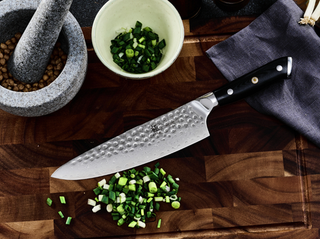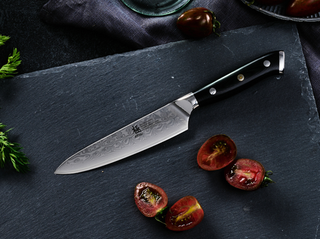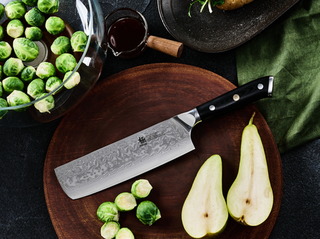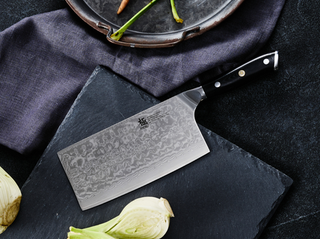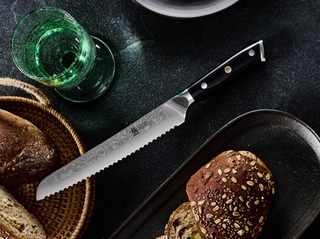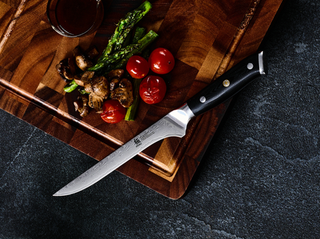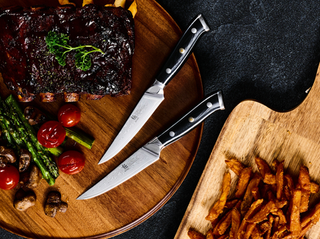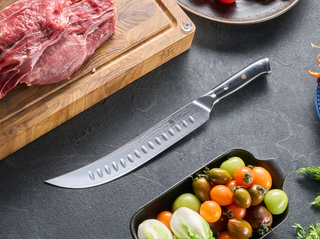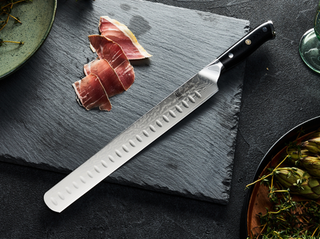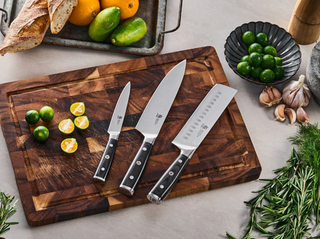How to Choose the Right Japanese Knife for Your Needs
Japanese knives are known for their precision and durability, making them a popular choice for professional chefs and home cooks alike. However, with so many types of Japanese knives available, it can be overwhelming to choose the right one for your needs. In this post, we'll provide a comprehensive guide on how to choose the right Japanese knife for your needs, considering factors such as type of knife, blade material, blade shape, handle material, price, and brand reputation.
1.Types of Japanese Knives
There are several types of Japanese knives available, each with their own features and benefits. The most popular types of Japanese knives include:
- Gyuto (chef's knife): A versatile knife with a pointed tip and a curved blade that is perfect for slicing, chopping, and mincing.
- Santoku knife: Similar to the Gyuto knife, but with a wider blade and a flatter edge, making it ideal for slicing vegetables, meats, and fish.
- Nakiri knife: A rectangular-shaped knife with a thin, flat blade that is ideal for chopping vegetables.
- Sashimi knife: A long, thin, and sharp knife that is specifically designed for slicing raw fish.
- Deba knife: A heavy, thick knife with a single beveled edge that is ideal for cutting through bones and other tough materials.
- Usuba knife: A thin, sharp knife with a straight blade that is ideal for slicing vegetables.
When choosing a Japanese knife, it's important to consider your cooking needs and preferences to determine which type of knife is best suited for you.
2.Factors when consider buying
Blade Material
Japanese knives are typically made from high-quality steel, with several different types of steel available, including high carbon steel, stainless steel, and Damascus steel. High carbon steel is known for its sharpness and durabiltity, but requires more maintenance than stainless steel. Stainless steel is more resistant to rust and stains, but may not be as sharp as high carbon steel. Damascus steel is a combination of multiple types of steel, resulting in a unique and beautiful pattern on the blade.
When choosing a Japanese knife, consider the type of steel that best suits your cooking needs and level of maintenance required.

Blade Shape
Japanese knife blades come in a variety of shapes, including straight blades, curved blades, double beveled blades, and single beveled blades. Straight blades are ideal for slicing and chopping, while curved blades are better for rocking motions. Dle single beveled blades are ideal for precision cutting, such as for sushi.
When choosing a Japanese knife, consider the shape of the blade that best suits your cooking needs and preferred cutting style.
Handle Material
Japanese knife handles are typically made from wood, resin, or synthetic materials. Wood handles are durable and provide a comfortable grip, but may require more maintenance than resin or synthetic materials. Resin handles are easy to maintain and provide a good grip, while synthetic materials are lightweight and durable.
When choosing a Japanese knife, consider the handle material that best suits your grip and maintenance preferences.



3.Price
Japanese knives can range in price from under $50 to over $500, depending on the type of knife, blade material, and brand reputation. While it's tempting to choose a cheaper knife, investing in a high-quality Japanese knife can provide a better cutting experience and last longer in the kitchen.
When choosing a Japanese knife, consider your budget and how much you're willing to invest in a high-quality knife that will last.
| Interest | Interest | Interest |
| Payment Terms | Payment Terms | None |
| Payment Terms | Varies by loan type | None |
| Shop now > | Shop now > | Shop now > |
4.Brand Reputation
When choosing a Japanese knife, it's important to choose a reputable brand that is known for producing high-quality knives. Some popular brands of Japanese knives include Shun, Global, Miyabi, and Kyocera. These brands have a reputation for producing high-quality knives with durable materials and excellent craftsmanship.
When choosing a Japanese cleaver knife, consider the brand reputation and look for reviews and recommendations from other chefs or home cooks to ensure you're investing in a high-quality knife that will last.
5.Conclusion
Choosing the right Japanese knife can make a big difference in your cooking experience and the quality of your dishes. When choosing a Japanese knife, consider the type of knife, blade material, blade shape, handle material, price, and brand reputation. By taking these factors into consideration, you'll be able to find a Japanese knife that suits your cooking needs and preferences, providing you with a long-lasting and enjoyable cutting experience.
